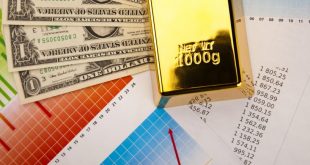Inflation has proven to be one of the most blistering features of the covid economy, testing the White House and Federal Reserve.
Gasoline prices hover around $4.00 a gallon for the least expensive grade at several gas stations in the nation’s capital on April 11, 2022 in Washington, DC. Prices rose 8.5 percent in March compared with a year ago, the largest annual increase since December 1981, as Russia’s war in Ukraine drove up energy prices and policymakers launched a major effort to get soaring inflation under control.
The inflation data, released Tuesday by the Bureau of Labor Statistics, showed prices rose 1.2 percent in March compared with February. Price increases for gas, shelter and food were the largest contributors to inflation, underscoring how higher prices has become inescapable for households and businesses simply trying to get by.
The report reflected the severe economic repercussions of Russia’s invasion of Ukraine, especially on energy markets. Numerous categories, or indexes, showed a big increase. Overall, the energy index has risen 32.0 percent over the last year. The gasoline index rose 18.3 percent in March after climbing 6.6 percent in February.
Inflation explained: how prices took off
The food index rose 1 percent in March compared to February. It is up 8.8 percent compared to the prior 12 months, with few categories left untouched. Breakfast cereal was up 2.4 percent from February to March. Rice prices rose 3.2 percent, ground beef grew 2.1 percent, and eggs were up 1.9 percent. Milk was up 1.3 percent, potatoes 3.2 percent, and canned fruits and vegetables tacked on 3.8 percent.
Rents were up 0.4 percent in March compared to the previous month, down slightly from their 0.6 percent climb in February. Just a few months ago, officials at the White House and Fed hoped that inflation was starting to tick down month by month. But those projections were quickly dashed by Russia’s invasion, covid shutdowns at major Chinese manufacturing hubs, and the bleak reality that inflation continues to spread through every crevice of the economy.
Persistently high inflation comes as economists and analysts increasingly fear a looming economic slowdown. In March, Bank of America analysts lowered their estimates for growth in 2022 from 3.6 percent to 3.3 percent. The Federal Reserve also recently downgraded its GDP forecasts, with officials cautioning that the war in Ukraine is casting much uncertainty over the world order.
It is unclear how severe a slowdown could lie ahead. Fed officials say that the economy is still in a position of strength, given low unemployment and the relative strength of household balance sheets. But as it sets out to rein in inflation, the Fed will strive to cool the economy down without causing it to contract altogether.
Energy prices were widely expected to be one of the driving forces behind the March inflation report. Russia’s invasion triggered a slew of international sanctions that are intended to choke off Russia’s economy and Putin’s inner circle. But attempts to isolate Russia have also carried consequences for the world economy, putting supplies of oil, wheat and other commodities are under new pressures.
Crude oil soared to new highs last month, and rising gasoline prices quickly followed. Even as crude prices ease up, sticker shock at the pump continues to stretch peoples’ wallets and sour their perceptions of the overall economy.
The March inflation report offered some optimism. Prices for used cars and trucks have been a major drag on inflation, as a global semiconductor shortage collides with staggering consumer demand. But in March, the index for used cars and truck fell 3.8 percent, clinching a second-consecutive monthly decline.
Inflation has proven to be one of the most blistering features of the pandemic recovery, one that weighs directly on households across the country. Rents are rising, groceries are more expensive, and even wage increases aren’t always enough to cover the basics. And households aren’t expecting a quick reprieve. Survey data from the New York Fed showed that in March 2022, U.S. consumers expected 6.6 percent inflation over the next 12 months, up from 6.0 percent in February. That marked the highest reading since the survey began in 2013, and a steep month-to-month jump.
The more households and businesses expect prices will climb in the future, the more self-fulfilling inflation can become. Already, policymakers are rushing to get ahold of prices that have turned out to be anything but the temporary wrinkle they predicted for much the pandemic.
In mid-March, the Fed launched its first-rate hike since the pandemic and penciled in six more to catch up with rising prices in 2022. In the past few weeks, officials have signaled that even more aggressive hikes could come in the next few months.

 Noor Trends News, Technical Analysis, Educational Tools and Recommendations
Noor Trends News, Technical Analysis, Educational Tools and Recommendations




